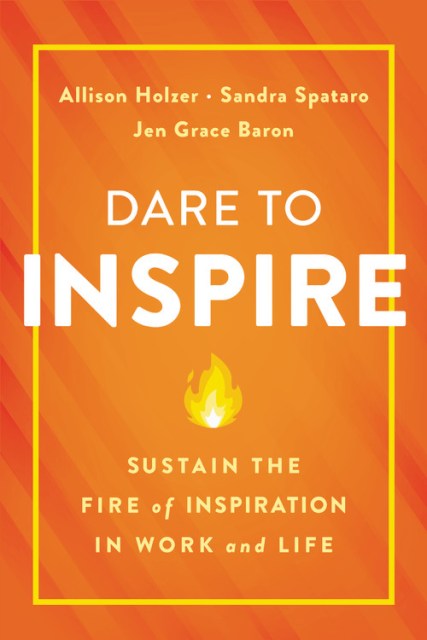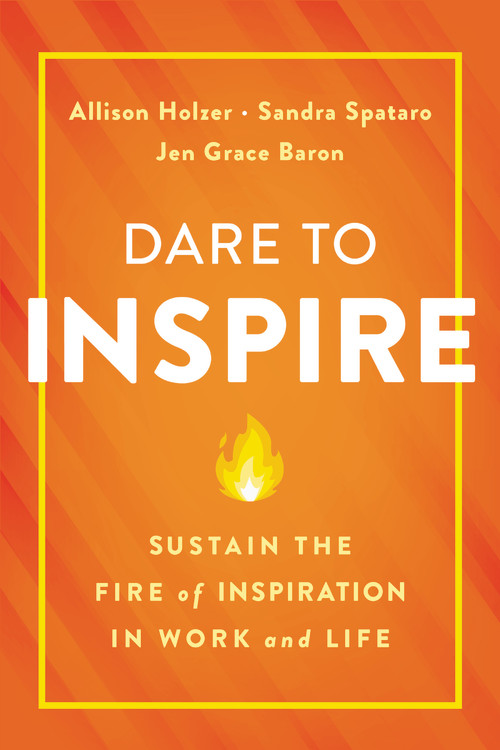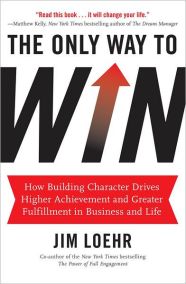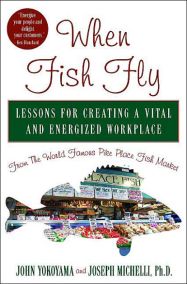Promotion
Use code BEST25 for 25% off storewide. Make sure to order by 11:59am, 12/12 for holiday delivery!
By clicking “Accept,” you agree to the use of cookies and similar technologies on your device as set forth in our Cookie Policy and our Privacy Policy. Please note that certain cookies are essential for this website to function properly and do not require user consent to be deployed.
Dare to Inspire
Sustain the Fire of Inspiration in Work and Life
Contributors
By Sandra Spataro
By Jen Grace Baron
Formats and Prices
- On Sale
- Nov 12, 2019
- Page Count
- 304 pages
- Publisher
- Balance
- ISBN-13
- 9780738285726
Price
$37.00Price
$47.00 CADFormat
Format:
- Hardcover $37.00 $47.00 CAD
- ebook $14.99 $19.99 CAD
- Audiobook Download (Unabridged)
This item is a preorder. Your payment method will be charged immediately, and the product is expected to ship on or around November 12, 2019. This date is subject to change due to shipping delays beyond our control.
Buy from Other Retailers:
-
"Smart, well-researched, and timely... Dare to Inspire shows how to spark and sustain exponential growth."Shawn Achor, NewYork Times bestselling author of Big Potential and The HappinessAdvantage
-
"In Dare to Inspire, the authors have identified a most critical element of successful teams and organizations of the future...their practical tools and frameworks make inspiration accessible and sustainable for any leader, team, or organization."AmyC. Edmondson, professor, Harvard Business School, author of The FearlessOrganization
-
"Dare to Inspire shows us how inspiration need not be a fleeting emotion, but can be intentionally practiced, sustained, and cultivated for maximum positive impact on the world."ScottBarry Kaufman, psychologist at Columbia University and coauthor of Wired toCreate
-
"A must read for entrepreneurs, effective leaders, and CEOs who want to build a competitive advantage through the power of their people."Chip Conley, New York Times bestselling author and hospitalityentrepreneur
-
"A compelling compilation of examples showing the remarkable results inspired teams achieve and a leader's roadmap on how to accomplish it."Gary Garfield, former CEO Bridgestone Americas
-
"What's at the intersection of possibility and invincibility? Inspiration. The authors show you how to spot it, grow it, and sustain it to fuel your own creativity and motivation, and that of your team or organization."Margaret H. Greenberg, MAPP, PCC, executive coach and author of Profitfrom the Positive
-
"People hope for success, but they crave inspiration; the problem has always been in knowing how to find it -- Holzer, Spataro, and Grace Baron show us how. Reading Dare to Inspire, half the time I had a lump in my throat, the other half a fire in my gut."Brigadier General Thomas A. Kolditz, PhD, founding director, Ann andJohn Doerr Institute for New Leaders Rice University and founding director,West Point Leadership Center, U.S. Military Academy
-
"This is a useful workbook for people seeking a positive spin on easily digestible advice."Publishers Weekly
Newsletter Signup
By clicking ‘Sign Up,’ I acknowledge that I have read and agree to Hachette Book Group’s Privacy Policy and Terms of Use






